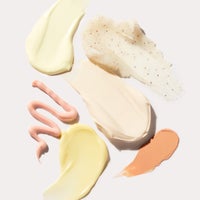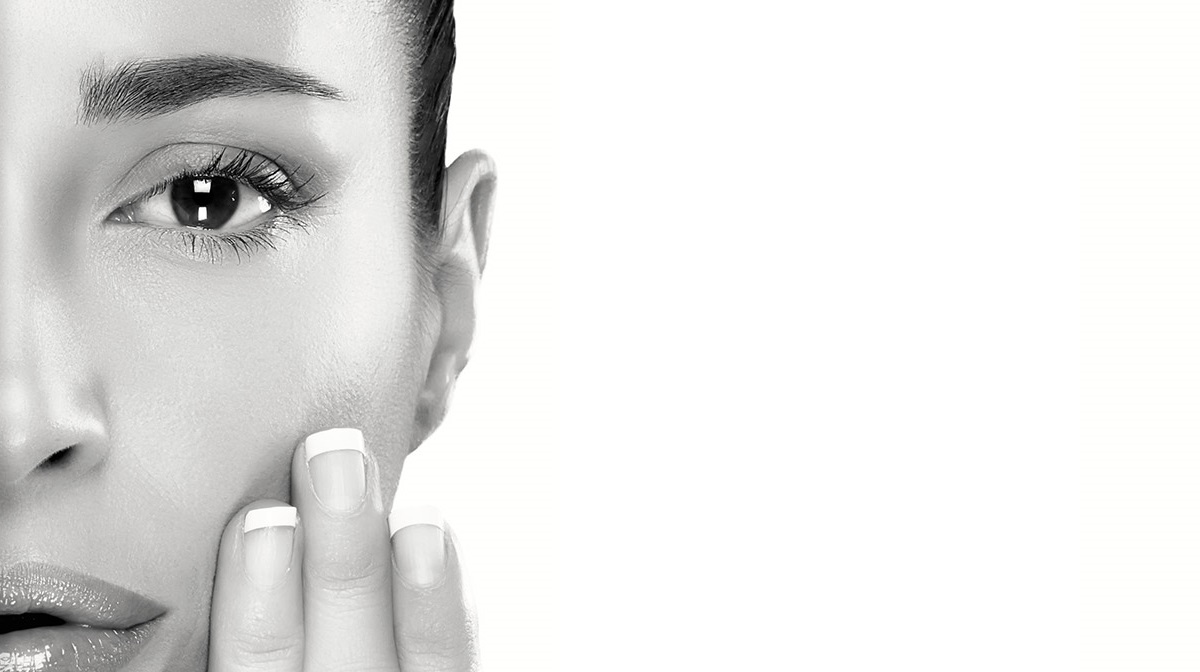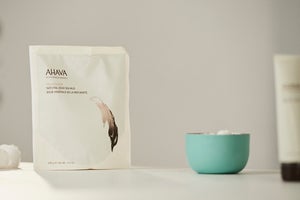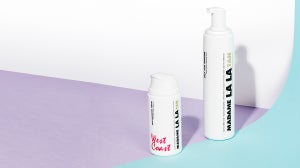
Few other ingredients can boast of standing on the same platform as retinol when it comes to anti-aging skincare. But although retinol has long been the gold standard in maintaining healthy and youthful-looking skin, it’s also one of those ingredients that are surrounded by plenty of confusion and questions. For starters, are retinol and retinoid the same thing? And if not, what is the difference?
Retinol and retinoid are almost always used interchangeably, but skincare experts would tell you that although the two are related—both are derivatives of vitamin A—retinol and retinoid are two different types of ingredients. Read on to learn a bit more about retinol vs retinoid, how to make the most of their benefits, and which product is right for your skin.
Table of Contents:
- What is retinol?
- What is a retinoid?
- What are the key differences between retinol and retinoids?
- What are the benefits of retinol and retinoids?
- What are the risks of using retinol and retinoids?
- How to choose the right retinol or retinoid product for your skin
- The Bottom Line
What is retinol?
One of the most sought-after ingredients in serums, treatments and moisturizers, retinol is a specific type of retinoid that falls under the vitamin A family. Because it is a milder form of retinoid, retinol is more accessible and readily available over the counter.
Retinoids and retinol differ on a molecular level, which is why one gets the job done faster than the other. Although both work in the same way, retinol and retinoid contain different concentrations of retinoic acid—the active vitamin A ingredient that they convert to on your skin.
Retinol is the slower and less powerful of the two, containing lesser amounts of the active ingredient. Once applied to the skin, retinol starts its task by first converting into retinoic acid. But because the retinol found in most OTC products comes in ester form, it adds a few extra steps to the conversion process. And when it comes to skincare products, the slower and the longer it takes for an ingredient to break down, the weaker it becomes.
Results from retinol use may not be as fast or dramatic, but this star ingredient is far from being a slacker. An anti-aging MVP, retinol does some serious heavy lifting by increasing blood flow to the skin, stimulating cell turnover and improving collagen and elastin production. Likewise, retinol causes basal cells to divide and encourages the formation of new epidermal cells on the skin’s surface while shedding dead and damaged cells. As a result, age spots and hyperpigmentation become less noticeable and fine lines and wrinkles are blurred.
What is a retinoid?
Retinoid is the catch-all term used for a group of compounds derived from vitamin A, which also includes retinol, tretinoin, adapalene and retinal, to name a few. Simply put, retinol is a type of retinoid, but a retinoid can be any one of a few vitamin A derivatives.
In skincare products, retinoid refers to prescription-strength variants of retinoic acid. They contain higher levels of the active ingredient, which makes them more potent than OTC retinol products. Hence, retinoids are often given as a targeted treatment for specific skin conditions, including cystic acne and psoriasis.
The molecular structure of retinoids allows them to break down into retinoic acid in one step, making them work faster than retinol (which could take a few steps and four to six weeks to convert). Retinoid products are also FDA-approved, which means the results they claim have been clinically proven.
What are the key differences between retinol and retinoids?
Still confused about retinol vs retinoid? The table below illustrates the primary differences between retinol and retinoids.
| Feature | Retinol | Retinoids |
| Availability | Over-the-counter | Prescription |
| Potency | Mild | Potent |
| Speed of results | Slow | Fast |
| Side effects | Less likely | More likely |
What are the benefits of retinol and retinoids?
From acne and pigmentation to dark under-eyes and crow’s feet, retinol and retinoids don’t hold back in fighting the good fight for your skin. The following are some of the top known benefits of retinol and retinoids:
- Reduce the appearance of fine lines and wrinkles: Retinoids, including retinol, are second to none when it comes to skincare ingredients that can turn back time. They have been shown to speed up cell turnover, increase collagen production and even out skin tone.
- Improve skin texture: As retinol and retinoids increase blood flow, they lead to the growth of new and healthier cells. This prevents dead skin cells from building up on the skin surface and clogging your pores, giving you a softer and smoother canvas.
- Treat and banish acne: Aside from minimizing wrinkles and other signs of aging, retinoids are also most revered for their acne-prevention and treatment capabilities. Retinols and retinoids work in a few ways to combat stubborn acne. Their exfoliating properties release debris, excess oil and bacteria that are trapped in your pores and cause breakouts. And because of their tiny molecular structure, retinoids are also able to penetrate deeper into the middle layer of the skin. This boosts cell turnover and collagen and elastin production, which, in turn, tackles inflammation, speeds up healing and prevents scarring.
What are the risks of using retinol and retinoids?
As the less potent type of retinoid, retinol side effects are often mild, making it generally safe to use even for those with sensitive skin.
On the other hand, retinoid products are packed with higher levels of its active ingredient, so it’s always wise for you and your doctor to get a better understanding of your skin and concerns before asking for a prescription.
In many instances, retinoid side effects are caused by overuse or misuse of the product or not giving your skin enough time to adjust and acclimate to the ingredient. Retinoid products with higher concentrations of the active ingredient also increase the chance of the user experiencing some side effects. These include:
- redness and mild irritation
- dryness
- flaking or peeling skin
- sun sensitivity
The good news is, there are steps you can take to keep these side effects to a minimum. Here are some suggestions:
- Use the product only at night and stay out of the sun during the day.
- Apply a moisturizer after using retinoids or retinol to prevent dryness, itching and flaking.
- Follow your doctor’s prescription or the package label. Don’t use the product more frequently or for longer than intended.
- Don’t use retinol or retinoid products if you are pregnant, lactating or trying to conceive.
How to choose the right retinol or retinoid product for your skin
There is no one-size-fits-all solution in skincare, and retinol and retinoids are no different. It goes without saying that choosing the right product depends largely on the skin concerns you want to address, your skin type and the kind of ingredients/treatment it can handle.
There are different types of retinoids other than retinol, and each has different levels of potency. Tazarotene, for example, is known to be one of the most potent topical retinoids available. In lower doses, it can be used to treat acne, while higher concentrations are commonly prescribed for psoriasis. Tretinoin is also another popular prescription retinoid, which is often used for anti-aging and acne treatment.
For over-the-counter options, there’s rising star retinal or retinaldehyde. At only one conversion away from retinoic acid, it delivers top-notch anti-aging benefits up to 11 times faster than its retinol cousin while also being less irritating than other retinoid varieties.
Here are a few more factors to consider when choosing a retinol or retinoid product:
- Your skin type: Milder forms of retinoids, such as retinol, are deemed safer for sensitive and dry skin. When buying over the counter, always look for “non-irritating” options and pay close attention to the rest of the ingredients.
- Product strength: As mentioned above, different types of retinoids come in various strengths or potency. For first-time retinoid users, it’s always best to start at the lowest concentration and gradually work your way up. This allows your skin to adjust to the ingredients and minimize side effects.
- Type of retinoid: Each type of retinoid targets specific skin concerns and comes with its own set of benefits and potential drawbacks. Speak with your doctor before starting your retinol or retinoid journey.
- Price: The price range for retinol and retinoids is as wide as the type of products and formulations available. This is a great thing because it means that with a little research and some expert advice, you can find a retinol or retinoid product that can give your skin all the benefits without breaking the bank.
The Bottom Line
Retinoid is the umbrella term for a family of vitamin A derivatives that includes retinol. Topical retinoids contain varying levels of prescription-grade retinoic acid, the active ingredient that vitamin A breaks down into once applied to the skin. There are several types of prescription retinoids, and each one is used to address a specific skin concern.
Meanwhile, retinol is a milder form of retinoid that can be bought over the counter and is arguably the most common retinoid type found in serums, moisturizers and treatments.
Although retinol is considered less powerful than other retinoids, owing to the fact that it works slower and contains lower concentrations of retinoic acid, it continues to be a crowd favorite among skincare enthusiasts. And for good reason—both retinol and other retinoid products consistently deliver the best results when it comes to acne treatment, fading dark spots and discoloration and anti-aging skincare.
Shop all Retinol products on SkinStore from serums and treatments to moisturizers.

Related Articles




